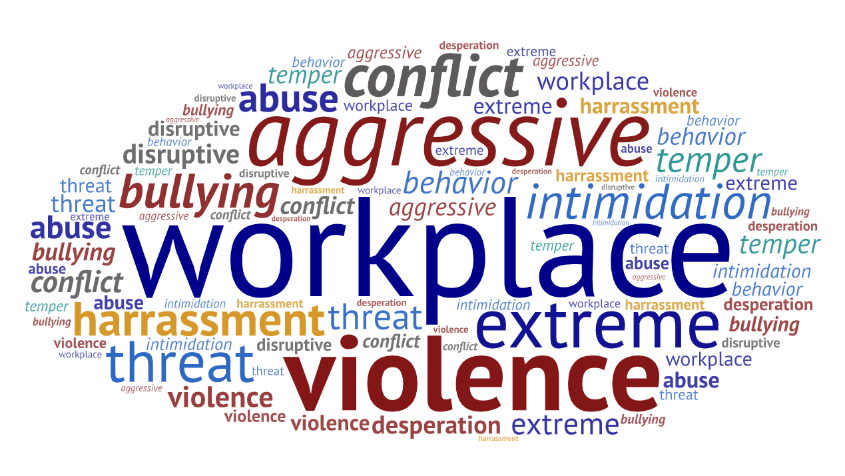SHERG Magazine
What is Workplace Abuse?
Workplace abuse is any repeated, harmful mistreatment of an employee by one or more individuals in the workplace. It goes beyond simple disagreements or occasional stress and involves a pattern of behaviour that is intimidating, hostile, degrading, or offensive. This behaviour can be verbal, nonverbal, psychological, or physical, and it creates a toxic work environment that undermines an individual’s dignity, well-being, and productivity.
A key characteristic of workplace abuse is power imbalance. The abuser is often in a position of power (like a manager or supervisor), but it can also be a peer or even a subordinate.
Types of Workplace Abuse
- Verbal Abuse
This includes the use of hurtful, aggressive, or degrading language toward an employee. It often occurs in meetings, emails, or casual conversations and can be either direct or subtle. Examples include:
• Name-calling, insults, or mocking an employee’s appearance, intelligence, or background.
• Constant negative judgment, nitpicking, or belittling performance without constructive feedback.
• Threats of demotion, dismissal, or harm.
• Sarcastic or dismissive comments meant to be humiliating.
• Racist, sexist, homophobic, or discriminatory remarks.
Verbal abuse erodes confidence, creates a hostile environment, and may escalate into other forms of abuse. - Physical Abuse
Any unwanted physical contact or threat of violence constitutes physical abuse in the workplace.
Examples include:
• Hitting, slapping, pushing, or shoving.
• Blocking someone’s path, restraining, or physically intimidating them.
• Throwing objects, slamming doors, or using body language to threaten.
• Threats of physical harm or gestures suggesting violence.
Physical abuse can cause both physical injury and severe psychological trauma, and it is also a criminal offence. - Psychological/Emotional Abuse
This is one of the most common but often overlooked forms of workplace abuse. It involves behaviours that undermine confidence, cause fear, or isolate individuals. Examples include:
• Bullying and repeated targeting of an individual.
• Gaslighting – making a person doubt their own perception or memory.
• Manipulation of work assignments to set someone up for failure.
• Spreading rumours, gossip, or lies to damage reputations.
• Social exclusion, ignoring someone in meetings, or deliberately leaving them out of communication.
• Professional isolation – excluding an employee from opportunities for growth, training, or collaboration.
Emotional abuse can lead to anxiety, depression, burnout, and loss of trust in leadership. - Misuse of Power
When authority is abused, it creates a culture of fear and intimidation. Examples include:
• Overbearing supervision – micromanaging, excessive monitoring, or treating employees like children.
• Unreasonable demands such as unrealistic deadlines, impossible workloads, or last-minute tasks.
• Deliberately undermining work or taking credit for someone else’s achievements.
• Using status or rank to intimidate, silence, or control others.
• Retaliating against employees who raise concerns or report misconduct.
Abuse of power damages morale and often results in high staff turnover. - Sexual Harassment
Sexual harassment involves any unwanted sexual behaviour that creates a hostile or unsafe work environment. Examples include:
• Unwelcome sexual advances, requests for sexual favours, or pressure for dates.
• Sexually explicit jokes, comments, or gestures.
• Inappropriate touching, brushing against someone, or invading personal space.
• Sharing or displaying offensive images, messages, or videos.
• Quid pro quo harassment – offering job benefits in exchange for sexual favours or threatening penalties for refusal.
Sexual harassment is a serious violation of human rights and workplace law. - Discrimination
Discrimination occurs when an employee is treated unfairly or harassed based on protected characteristics. Examples include:
• Denying promotions, pay increases, or opportunities because of race, gender, disability, age, religion, or sexual orientation.
• Making derogatory jokes or stereotypes.
• Assigning undesirable tasks or excluding individuals from projects due to bias.
• Retaliation against employees for reporting discrimination or standing up for others.
Discrimination not only harms individuals but also exposes employers to legal consequences.
What to Do if You Experience Workplace Abuse
- Document Everything
• Keep detailed records of dates, times, and specific actions.
• Note the names of witnesses or anyone else aware of the incidents.
• Save copies of emails, text messages, or other evidence. - Using Formal Grievance Processes
• Report abuse through HR or the designated grievance channel.
• If the abuser is your direct manager, escalate to a higher authority.
• Follow company procedures to ensure your case is recorded officially. - Seek Support
• Confide in trusted colleagues, friends, or family members.
• Use Employee Assistance Programmes (EAP) if available.
• Seek professional counselling to protect your mental health. - Consult Legal Professionals
• If abuse continues or retaliation occurs, contact a labour lawyer.
• You may escalate the matter to bodies such as the Commission for Conciliation, Mediation, and Arbitration (CCMA) or the Labour Court.
• Remember: you have the right to a safe and respectful workplace.
How Employers Can Prevent Workplace Abuse
- Clear Policies
• Develop and communicate a zero-tolerance policy for abuse, harassment, bullying, and discrimination.
• Outline consequences for offenders clearly.
• Ensure policies comply with Labour legislation and health and safety regulations. - Employee Training
• Provide mandatory training on respect, diversity, conflict resolution, and inclusive leadership.
• Train managers to identify early warning signs of abuse and respond appropriately.
• Regularly refresh training to keep awareness high. - Accessible Grievance Mechanisms
• Create multiple, confidential reporting channels (hotlines, HR, anonymous reporting).
• Guarantee no retaliation for reporting.
• Ensure complaints are investigated quickly, fairly, and transparently. - Support Systems
• Provide counselling, wellness programmes, and access to mental health resources.
• Offer mediation or conflict resolution services where appropriate.
• Recognise and reward respectful behaviour to reinforce a positive culture.

